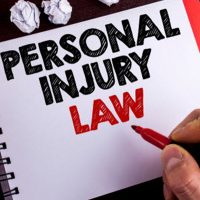Are Second Degree Burns Serious?

Our clients suffer burn injuries in many different accidents. Some are burned when their car catches on fire or battery acid splashes on their skin. Others are burned when defective products explode or catch on fire. In addition to flames and chemicals, electricity can also cause burns.
Not every burn injury is life-threatening, however. In fact, some small first-degree burns can be treated at home. But what about second-degree burns? Should you go to a doctor if you suffer one? And what kind of medical care would you need? Our Delray Beach personal injury lawyer looks at what you need to know.
Classifying a Second-Degree Burn
Doctors generally recognize three or four categories of burns: first-degree, second-degree, and third/fourth degree burns. A second-degree burn has the following features:
- It burns the outer layer of skin and partially burns the second layer.
- A second-degree burn can be superficial or deep, depending on whether it damages the sweat and oil glands.
- A second-degree burn can develop blisters and is very painful to touch.
Typically, second-degree burns are not immediately life threatening. However, it depends on the size of the burn. Something that covers an entire limb could be more dangerous than a burn the size of your palm or smaller. Consider all burns as serious injuries until a doctor tells you otherwise.
Treating a Second Degree Burn
A person who has suffered a second degree burn should go to the doctor or the hospital. There is a decent chance that the burn could become infected, which can create many problems if not properly treated. Your doctor might prescribe antibiotics to prevent this from happening.
Treatment will vary depending on the severity of the burn. As mentioned above, some second-degree burns are fairly superficial, whereas other damage deeper tissue. Your doctor might remove some of the damaged skin and perform grafts to cover the exposed areas. Surgery might be necessary to decrease inflammation and prevent infection from setting in.
Because these burns are painful, a doctor could prescribe painkillers and medicines to help you relax or sleep. A second-degree burn will usually heal within 3 weeks, though deeper ones might take longer.
Complications from Second-Degree Burns
In addition to infection, other complications include:
- Scarring or disfigurement. This can be a problem when the burn appears on an exposed area of the body, like the neck or hands.
- Limited movement. A second degree burn over a joint could limit its movement.
- Emotional distress. Burns might prevent a person from resuming their normal life, which can lead to depression, anxiety, and other mood disorders.
Remember to watch your burn carefully and follow your doctor’s orders. Infection might develop after a few days’ delay, and you will want immediate medical intervention if that happens.
We Will Fight for Compensation for Your Burn
Earnhart Law has obtained compensation for many burn injury clients. If you or a loved one has been hurt, please contact our law firm. We provide complimentary consultations where we can discuss your case in greater detail. Call us today at 561-265-2220 to set up a meeting.
https://www.delrayinjuryattorneys.com/how-to-avoid-injuries-this-summer/
